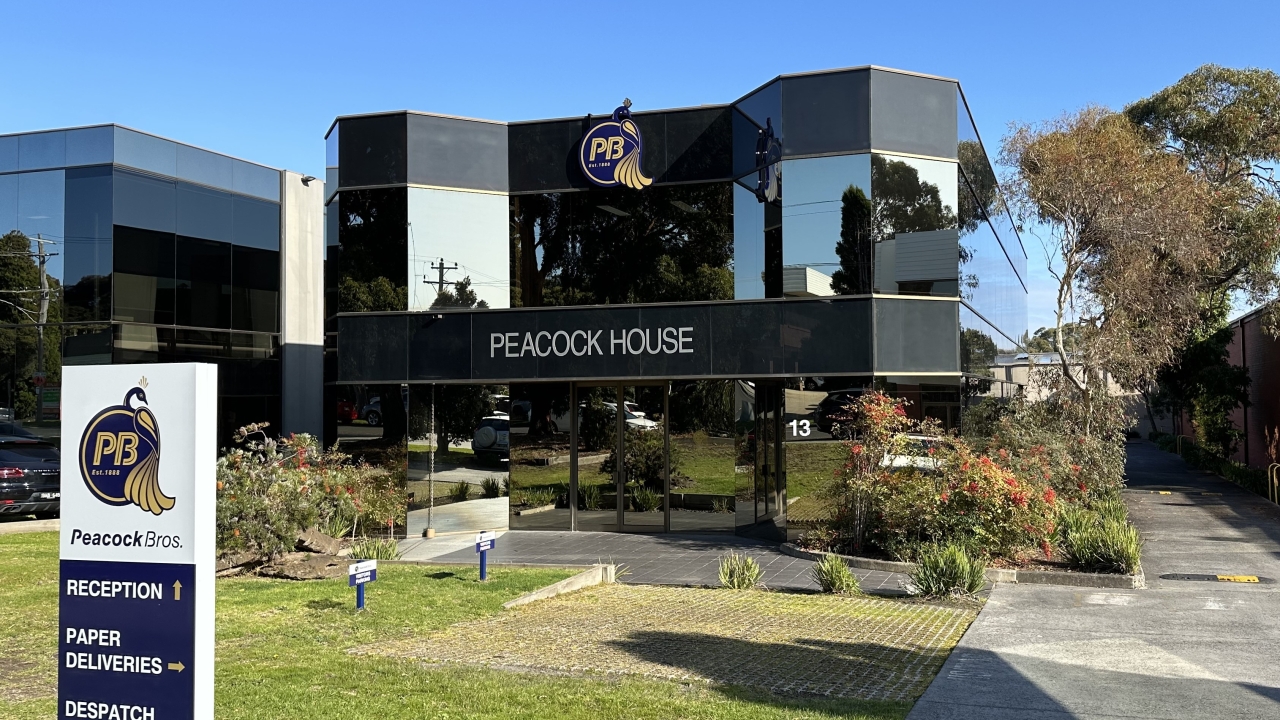China’s label market witnesses continuous development

The Chinese label market is making steady steps towards a full recovery. Labels & Labeling’s China editor Kevin Liu examines exactly what has gone on in the Far East during 2010
Data regarding the development of the Chinese economy in the first three quarters of 2010 released by the State Statistics Bureau, shows that China’s GDP in the said period has increased by 10.6 percent, up by 2.5 percent compared with the same period in 2009. It also showed that in 2010, China’s GDP surpassed that of Japan, making it the second largest economy in the world after the US. China’s economy has maintained a fast growth, paving the way for the development of label industry.
The printing industry in China grows along with the national economy. Statistics issued by the Printing and Printing Equipment Industries Association of China (PEAIC) indicate that the total output of the Chinese printing industry in 2009 stood at $77.3bn (515 billion RMB). In spite of the continuous impact of the global financial crisis, the industry has maintained rapid and steady development at a rate of 8.4 percent. The output of packaging printing totaled $25.7bn (171.5bn RMB), taking up 33.3 percent of the gross output of the printing industry – an increase of 10.6 percent compared with 2008, while the total output of label printing amounted to $1.95bn (13bn RMB), a surge of 18 percent compared with that of $1.7bn (11bn RMB) in 2008. Label and packaging printing now grow faster than any other printing markets in the country.
Now let’s look at some statistics about printing equipment. 2009 witnessed a decline of total output of China’s printing equipment at a rate of 6.3 percent, imports decreased by 18 percent, exports by 40 percent, while domestic sales increased by 19 percent, and the domestic purchasing market increased slightly by 0.4 percent. It appears, to some degree, the financial crisis has caused panic among investors, leaving the decision-makers within printing enterprises very prudent. Strategic shrink was generally regarded as the principle factor for survival by those enterprises in 2009. Suspension of investment was also commonly seen in the first half of 2009, when the whole industry took the ‘wait-and-see’ attitude in investment. In the second half of 2009, in particular during the fourth quarter of that year, the upbeat economic situation has boosted the confidence of printing enterprises, which were ready to set their hands to investment. Therefore, at Labelexpo Asia 2009, label printing enterprises had found an outlet for their pent-up enthusiasm for investment. The show witnessed a roaring trade with good news of placing orders in a row.
Investors’ enthusiasm has continued into 2010. During the first six months of this year, China’s import and export of printing equipment has grown by 65 percent, compared with the same period of 2009, imports have risen by 57.4 percent while exports are up by 83.6 percent. It would be fair to say, these figures represented an outburst of investors’ pent-up enthusiasm after a long wait-and-see period. Naturally 2010 has also witnessed the investment, expansion and merger of printers.
The above figures are confirmed by the actions of some of China’s major label printers. Tungkong Security Printing in Jinan, Shandong Province has set up a new label printing factory after purchasing an Omet Flexy 330 and a Nilpeter FA Series web-fed flexo press, meaning that the leader in the security printing sector has now expanded into the label printing sector. Canadian company CCL, recently invested $6m in a factory in Tianjin in June this year. Equipped with two Gallus ECS340 high-end printing facilities, it is their third factory built in China after the establishment of factories in Hefei and Guangzhou. Likewise, Suzhou Jiangtian Packaging & Printing near Shanghai has invested in Gidue E-Combat 12 color combination printing equipment, followed by the establishment of a new factory covering an area of 40 m2 and an order of more Gidue equipment. Foreign investment is set to continue with news filtering through that US company Multi-Color Corporation will enter the Chinese market in the near future, establishing a new factory in Guangzhou in the process.
Printers’ enthusiasm can be easily felt. Foreign-funded enterprises, listed companies and private entities are all looking to expand. It would appear too, that certain areas of China have been singled out for increased economic development. The Bohai Basin Economic Area, Yangtze River Economic Area and Pearl River Economic Area are all likely to benefit from this investment.
Of course, the expansion of printers leads to increased sales by printing equipment suppliers. Several large international equipment suppliers, such as Mark Andy, Nuova Gidue and ETI have benefited greatly from this expansion. Among them Nuova Gidue from Italy has decided to set up an assembly plant of flexo printing equipment in Shenzhen, Guangdong Province, making it the third foreign equipment manufacturer to establish factories in China. ETI from Canada has done so in Songjiang and Omet from Italy did the same in Suzhou. Local production of high-end foreign flexo printing equipment will inevitably shock China’s flexo printing, but at the same time promote its development in China.
When several large label printers are purchasing international high-end flexo printing equipment, especially when more and more international manufacturers have announced to set up assembly factories in China, it is justifiable to say that flexo printing in China is able to enter a period of rapid development?
Do the advantages of flexo printing outweigh those of letter press? Which one is more suitable for label printing? These kinds of arguments have been lasting in China for more than 10 years without any conclusion. But it is widely acknowledged that flexo printing has drawn unprecedented attention in China’s label industry today. In accordance with a survey among China’s label printing factories done by Keyin Media at the beginning of 2010, 96 percent of respondents said they have kept an eye on flexo printing, while only 4 percent said it did not interest them.
This survey has also collected opinions from enterprises which have not purchased flexo press. Fifty five percent of respondents believe that supporting fees, such as for the maintenance of equipment and purchase of spare parts are so high that they have hindered the development of flexo printing. While 51 percent of enterprises believe that the plate-making cost of flexo printing is much higher than letter press, being one of the bottlenecks for the development and promotion of flexo printing. Forty nine percent of respondents believe that the cost of consumables is too high. The same percentage think flexo presses alone is not capable enough to deal with short board live part, whereas the latter plays a major role in the domestic label industry. Forty five percent of respondents consider the domestic flexo printing market as immature. Forty five percent of respondents regard the flexo press to be too pricey; in particular, there is a huge gap between home-made flexo press and that made abroad in terms of mechanic precision and stability. The long-term exorbitant price of imported high-end flexo press with stable performance has prevented enterprises from purchasing.
In the report of the survey, label printers generally acknowledged that flexo printing outweighs letter press in speed, standard conformity and environmental protection.
Nevertheless, it cannot be denied that letterpress and offset press still take up the largest share of China’s printing industry; this can be supported by the number of domestic equipment manufacturers. At present, there are over 20 letter press manufacturers in China, about 10 flexo press manufacturers and five PS web offset press manufacturers. But it is noteworthy that nearly all the major letterpress manufacturers are producing or trying to produce flexo presses.
Manual inspection has long been the major way for inspection in China’s label printing enterprises, but in recent years equipment inspection has begun to initiate its promotion and application. It has spread quickly. The survey among label printing enterprises regarding their investment intention of equipment inspection shows that 74 percent of enterprises say they will to purchase such equipment within the next two years; while 52 percent of them already use such equipment (accounting for 38 percent of the respondents in total), and 48 percent do not use such equipment at all (accounting for 36 percent of total respondents). It is also the manifestation that label printers in China have changed their way of production in the face of an increase of raw material cost and the potential increase of labor cost.
National policy
Changes in national policy over the course of 2010 are noteworthy. The first one is the adjustment of the tariff for imported machines and equipment, among which the tariff for unit-type flexo press with thermoprint, holographic or screen print function will reduce from 10 percent to 5 percent. The second one regards environmentally friendly green printing. Last December, the Chinese Government announced at the Copenhagen Climate Conference that by 2020, carbon emission of per unit GDP will reduce by 40 percent – 45 percent compared with 2005. Some local governments have even gone to the extent, to restrict plants in power consumption in order to achieve this target – a full manifestation of the governments’ determination to reach this goal. In 2010 the Central Government begins to formulate the twelfth Five Year Plan for National Economic & Social Development of the People’s Republic of China, in which the central government has given top priority to green printing digital printing. It can be imagined that these two focuses will become the next hot topics within the Chinese label printing markets.
The third policy worthy of our attention is the electronic supervision code. State Food and Drug Administration of the People’s Republic of China has specified electronic supervision must be used on basic drugs. Notice has been issued on May 11, 2010 that any bid-winning enterprise producing basic drugs shall register with Drug Electronic Supervision Network prior to March 31, 2011. Producers shall label the smallest sales packaging with unified drug electronic supervision code before they leave the factory and launch to the market. In accordance with some competent authorities, there are about 307 types of basic drugs produced by 3000 pharmaceutical enterprises. Rough calculation shows that 30 billion labels are needed per year, which will be a great opportunity for inkjet press suppliers.
To conclude it is fair to say the financial crisis has accelerated the elimination of inferior enterprises, leaving survival to the more superior ones. Consequently, the self-adhesive label printing industry in China will develop in a more reasonable, regulatory and healthy way. China’s label printing market will enjoy a rapid growth in 2010.
This article was published in the 2011 L&L Yearbook
Stay up to date
Subscribe to the free Label News newsletter and receive the latest content every week. We'll never share your email address.


